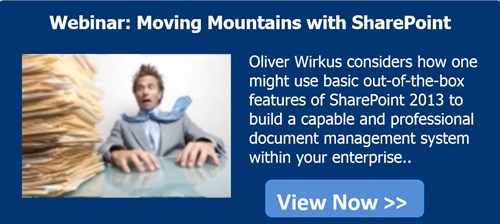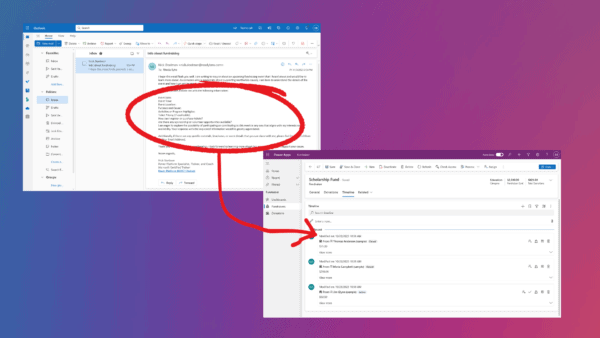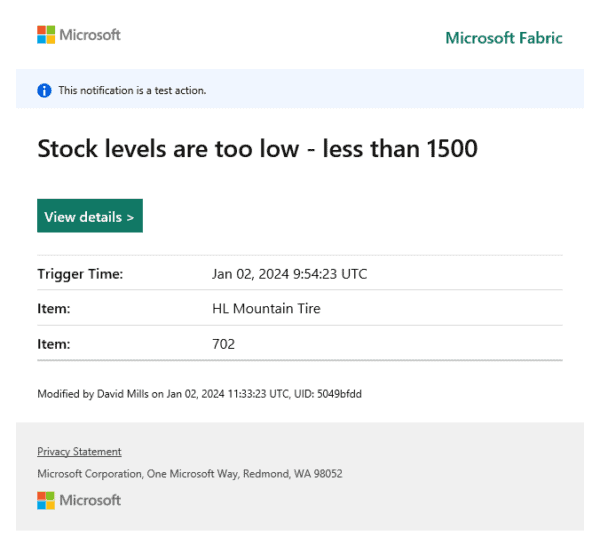When a company installs a new intranet, there are two applications that tend to be added very quickly: the staff cafeteria menu and a corporate news application. Often the first approach to adding the staff cafeteria menu to a new intranet is to simply add the daily or weekly menu as a PDF or an external hyperlink to a SharePoint page. Though also seemingly a simple requirement, the corporate news application should be viewed through a much more thoughtful lens.
Most companies make the shift to SharePoint 2013 because they recognize the many benefits of having a modern and powerful intranet. But simply replicating outdated processes on a shiny new platform is missing a huge opportunity to realize many of these benefits. Companies should take the time to review and potentially rethink current news distribution processes before implementing on their intranets.
When taking a closer look at the existing ways that companies distribute corporate news, we find all too often that the processes are cumbersome, inefficient and built around older technologies. The result can be information overload for employees, meaning important communications often get missed in the fray or ignored altogether. Varying channels of communication lead to information silos, and a lack of message consistency. Corporate culture and vision can suffer as a result.
Let’s look at some of the common challenges with corporate communications and news distribution:

The problems with e-mail publishing
1. The problems with e-mail publishing
While e-mail continues to be the primary communication tool of choice for many companies, it has long outlived its place as an effective internal communication medium. Today’s typical employee is faced with such a high volume of incoming email that many are challenged simply dealing with the emails directly relevant to their individual jobs. “Information” emails frequently get missed, put off for future reading that never happens, or are simply ignored altogether.
Once an email is sent it becomes a disconnected experience for the recipients. Each employee’s mailbox is an individual content silo. Employees are individually responsible for managing their own mailbox content. They must proactively save news that might be of future interest or it will get lost or eventually deleted. There is no history or archive of important corporate communications other than what they create for themselves. New employees have no access to content distributed before they started.
Do you really want to provide internal news to your employees like a digital pamphlet? Do you really want to make every single employee responsible for saving each piece of information that might be of interest sometime in the future?
SharePoint 2013 provides numerous features and functionality for liberating internal communications from the constraints imposed by email. Lists and libraries allow internal news to be saved just like any other content. A centralized communication repository provides a searchable reference archive, allowing all corporate communications to be accessible by all staff regardless of when they joined the company. SharePoint 2013’s powerful search features enable employees to find relevant content quickly and accurately. Dispersed content can roll-up to a centralized, aggregated view.

Consider your audiance
2. Considering your audience
While the content created for internal audiences is equally as important as that created for external audiences, consideration should be given to how presentation and distribution methods best align with communication objectives. Internal and external audiences engage and interact with content in very different ways. Brand, marketing and sales strategies play important roles in crafting and distributing external news. Accessibility, relevancy, engagement and culture are more often the top priorities with internal communications. Internal announcements often need quick distribution in easily digestible formats that are readily available for future referencing.
SharePoint 2013’s out-of-the-box features include the ability to publish abstracts of primary topics that hyperlink to full articles published as web page content, or leverage wiki or blog templates. Content targeting helps channel the most relevant content to the right internal audiences, reducing the “noise” of “all content to all people” publishing approaches.

Consistency
3. The importance of consistency
Legacy intranets tended to be highly freeform with content presentation. Varying areas of an intranet, including bulletins and news items, may have had very different looks and layouts depending on the content owner and/or the authors involved. The result can be jarring for the reader, and important content can be easily missed or overlooked.
Consistency of presentation helps readers easily identify types and priority of content. Different styles developed by various departments, locations or divisions can created a feeling of segregated cultures throughout an organization, while a standardized look and feel promotes a better sense of an integrated overall company culture.

Empowering your audience
4. Empowering your audience
The “lawn sprinkler” approach of distributing all corporate news and communications to all employees, regardless of relevancy to the individual, is a major contributor to ongoing information fatigue. While on the surface it may appear that “every blade of grass gets wet”, the reality is many are missed and many simply don’t pay attention.
There is a genuine need for some news items, such as messages from the executive or changes in corporate policies, to be targeted to all employees. But there are many other types of announcements that are only relevant to subsets of the organization. Providing solutions to target items to particular departments, roles, offices or other relevant subgroups helps eliminate the need to filter through irrelevant information. Enabling employees to self-subscribe to particular areas of interest encourages engagement and ensures the right content reached the right readers.
Managed Metadata in SharePoint 2013 provides a simple method for tagging news items. Term sets can be created to correspond with defined news channels. The same Term Sets can be used by employees to create their own personal news filters aligned to their positions and interests. Properties can be set in user profiles to automate user and channel alignments. These same features can be used for all variety of content distribution.
While a modern intranet – like SharePoint 2013 – is the right tool to use to improve your corporate news strategy, aligning publishing processes with SharePoint features is key to getting full value from the platform. Simply forklifting existing processes developed for less featured technologies is a major missed opportunity. Implementing something as simple as corporate news the right way can be the first step in opening the eyes of the entire organization to the benefits of the SharePoint platform. You may be amazed with the ideas your users come up with once they see what’s possible.
About the Author:
 Oliver Wirkus is a Senior SharePoint Consultant at Softlanding in Vancouver, Canada. An experienced SharePoint expert and software architect, Oliver has consulted for a variety of different industries and specializes in consulting for international projects. A long-standing SharePoint enthusiast, Oliver is a published, international speaker, former moderator of SPUG Stuttgart, and has been voted one of the Top 25 European SharePoint Community Influencers in recent years. He maintains the well-known SharePoint blog: http://sharepointcommunity.de/blogs/owirkus
Oliver Wirkus is a Senior SharePoint Consultant at Softlanding in Vancouver, Canada. An experienced SharePoint expert and software architect, Oliver has consulted for a variety of different industries and specializes in consulting for international projects. A long-standing SharePoint enthusiast, Oliver is a published, international speaker, former moderator of SPUG Stuttgart, and has been voted one of the Top 25 European SharePoint Community Influencers in recent years. He maintains the well-known SharePoint blog: http://sharepointcommunity.de/blogs/owirkus












